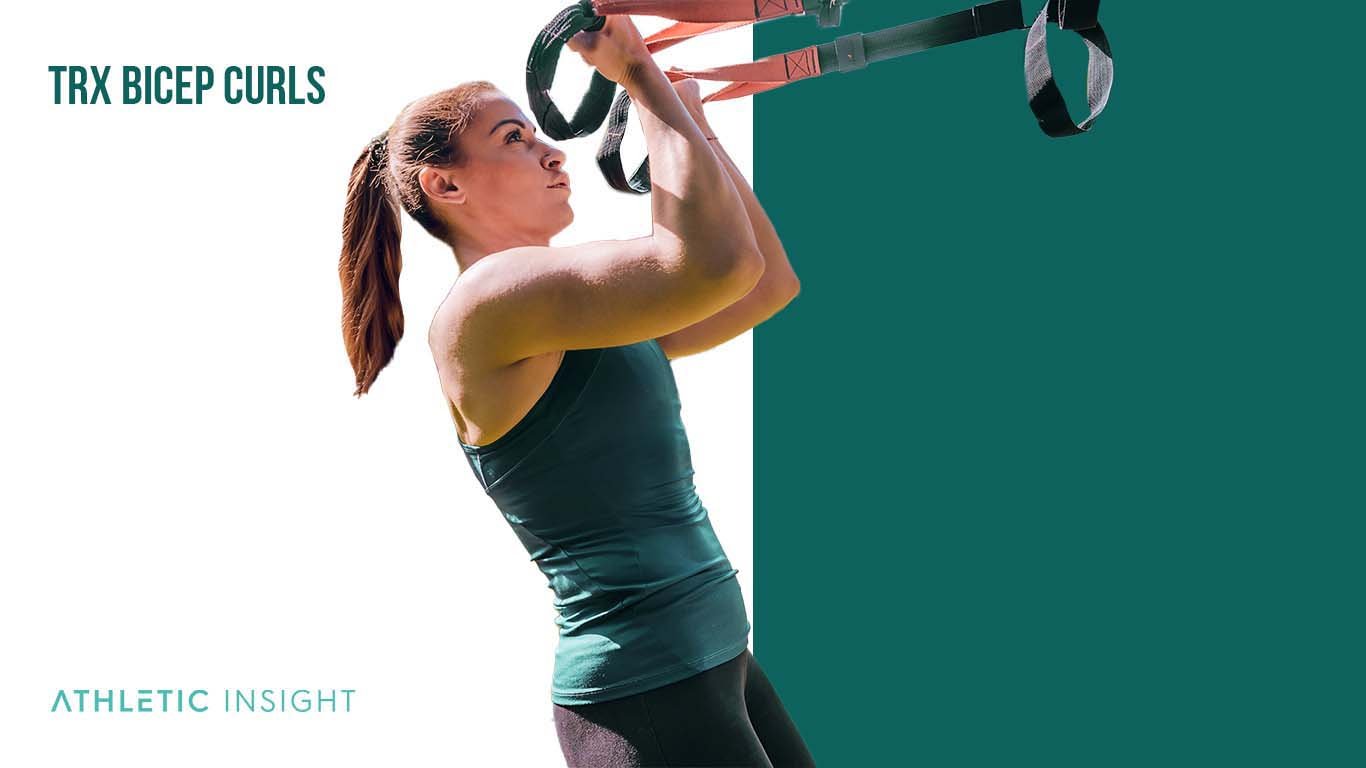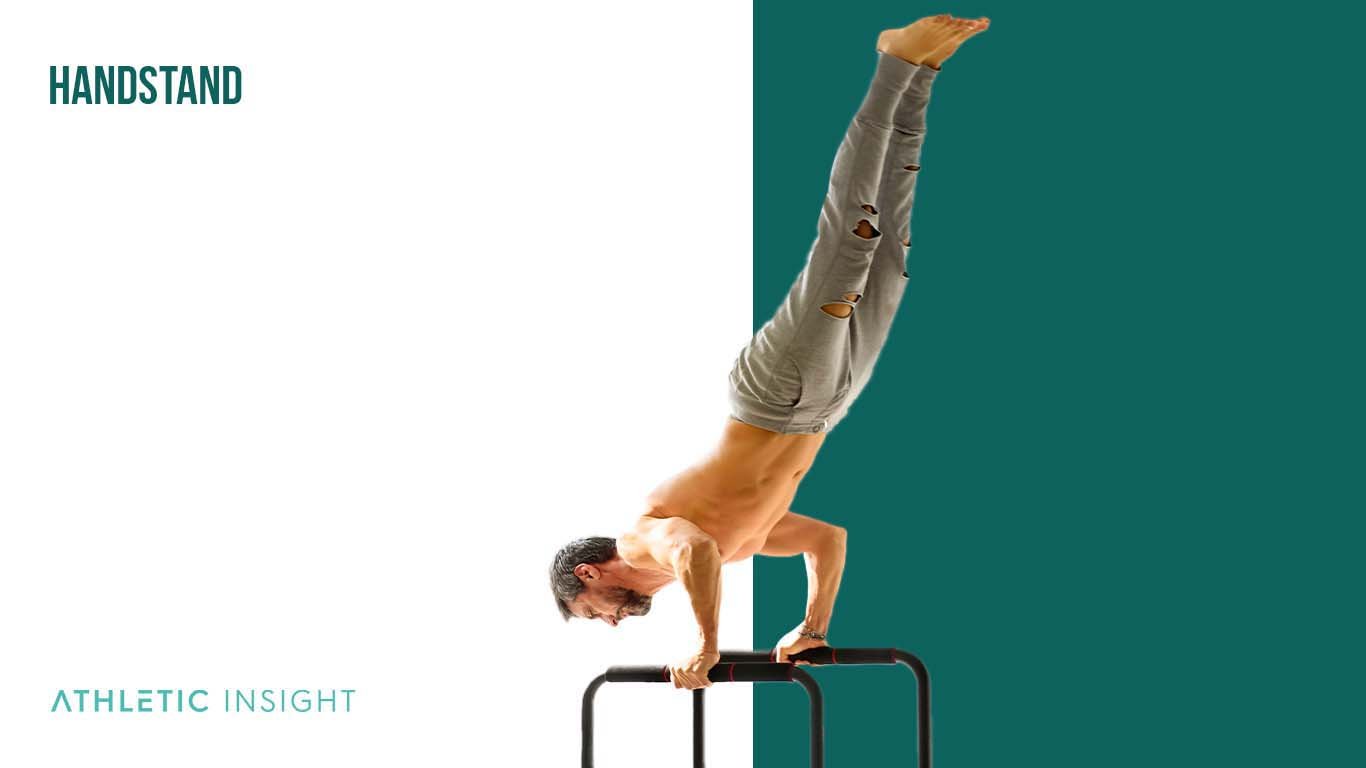Dumbbell bicep curls are a staple exercise for increasing arm bulk and strength. Curl exercises are considered by trainers to be appropriate for any beginner. There are many alternatives to this essential strength-training exercise. A bicep curl alternative includes any exercise that focuses on the biceps brachii.
There are plenty of reasons you might want to try an alternative to the dumbbell bicep curl. You may wish to change up your arm routine, try an exercise that requires more advanced techniques, or want to incorporate a new machine into your workout. Whether you are at home or in the gym, you can find some way of working your biceps.
Plenty of alternatives work with more than just the biceps. Some options combine abs, rhomboids, lats, or incorporate your entire body into the exercise. Others highlight cardiovascular or heart health as well.
Popular bicep curl alternatives exist in professional gyms and online. There are dozens upon dozens of possible choices for working your biceps by curling a weight. Some well-known alternative exercises include the following.
- EZ bicep curls: This beginner variation on the bicep curl also targets the biceps brachii, brachialis, and brachioradialis. It is helpful to reduce the wrist strain of the standard bicep curl. This exercise is about as easy to do as a normal bicep curl.
- No-feet rope climbs: This strenuous activity allows you to work on your biceps primarily, but throws in a ton of your upper-body muscles as well. By only using your arms, you also engage your shoulders, back, and abdominal muscles. Doing this is already harder than a bicep curl, but climbing without your feet advances the difficulty much further.
- Herculean curls: Also called “herculean cable curls,” or “Hercules cable curls,” this alternative requires a couple of machines. With an equal amount of weight on two pulleys, this exercise is slightly more advanced than a bicep curl. This alternative works the same muscles as the bicep curl but has a more difficult technique to get used to.
- TRX bicep curls: This total body resistance exercise increases the engagement of your muscles working out your core as well as your biceps. This bicep curl alternative can still be performed by beginners but introduces stress on the rectus abdominis muscle with a pair of suspension cables.
- Chin-up: Traditional chin-ups focus on your back, lats, and rhomboids, but with an underhand grip, your biceps are flexed as they bear your weight as you lift. This alternative is far more intense than the bicep curl but doesn’t require any weights or particularly special equipment.
- Bent over row: Performing a bent-over row requires a set of dumbbells or a barbell. This bicep curl alternative is especially helpful for strengthening your back muscles, the latissimus dorsi, and can be considered a full-body movement. This alternative is intermediate compared to a bicep curl.
- Handstand: This straightforward exercise requires a good deal of balance and proper technique to avoid hurting yourself. They are also a full-body workout. Doing a handstand is especially good for your biceps, shoulders, core, triceps, and back muscles. Although they involve no extra weights or machinery, they are considered intermediate for most people.
1. EZ Bicep Curl
The EZ bicep curl is a bicep curl alternative that focuses on the same muscle group, the biceps, or biceps brachii, as the standard bicep curl. This alternate exercise utilizes a curved bar, which helps reduce wrist strain and has advantages over a straight barbell. With its curved shape, your wrists will be in a neutral position, avoiding discomfort and injury.

This movement works for anyone, beginner to advanced. You don’t need to be a weightlifter or bodybuilder to benefit from this exercise but can change the amount of weight on your barbell as necessary.
Even though the primary muscle worked are your biceps, your brachialis, and your brachioradialis, or your forearm muscle, also get some work.
The hypertrophy of your arms is the main goal of this exercise. It works well in your routine if you want to quickly build muscle thanks to isolating a particular group of muscles. It’s a great replacement for the bicep curl if you are having any wrist pain or don’t have dumbbells available, but have access to a curved barbell.
Avoid bringing your elbows too far forward, so you have better concentration in your biceps. Another tip while performing this exercise is to stand with your back against a wall to help keep yourself from bending forward at any time during your reps.
People often choose a weight that’s too heavy for them. Therefore, pick the one you can comfortably lift with some effort. The goal of this exercise lies with larger repetitions.
Because of its similarities to the bicep curl, this exercise is easy to do with proper form.
2. No-Feet Rope Climbs
No-feet rope climbs are a full-body bicep curl alternative exercise that tests your strength and develops your upper body. You must also have an iron grip, agility, and coordination skills to perform this properly.
The primary muscle worked is your biceps, alongside your shoulders, forearms, back, and abs. Combining the muscles of your arms with your deltoids, latissimus dorsi, and the rectus abdominis muscle of your core makes this a tricky bicep curl alternative suitable for advanced gym-goers only.
The concept of the exercise is very simple, but keeping the proper form without using your legs is no small task. The gains you see from no-feet rope climbs will scale with your weight, becoming appropriately difficult as you increase in bulk and tone.
You can use your feet as support or break, but that’s optional, seeing as you’ll want to get the most out of your bicep strength.
For those just starting, try to use your legs to learn the rest of the technique of climbing before trying the real thing. Also, make sure that you are using a rope you’re comfortable with or wearing a suitable pair of gloves.
Professionals challenge themselves to go as quickly as possible, but many newer climbers make the mistake of trying to burst through the exercise. Take it slow, and you still get plenty of benefits to your entire upper body.
3. Herculean Curls
Herculean curls use cables to target your biceps, but you can substitute dumbbells if you’re not at the gym or prefer to work out at home. These alternative curls are an excellent change from the biceps curl because of the position of your upper arms. With your arms parallel to the floor, it poses the difficulty of keeping them stationary, thus working your biceps.
This alternative focuses heavily on your biceps, which means that even a small amount of weight will be effective for muscle growth.
Start small and slowly work your way up to make the most of this alternative. Another tip is to move slowly and consistently through all your repetitions. The constant tension provided by a machine or holding your arms up will be most effective at an even pace.
Not only do you need to focus on your arms, but keep your back straight, your head aligned with your spine, and your knees slightly bent. Your body should not be moving — which is a common mistake made while performing this exercise.
Beginners can accomplish this exercise in a proper form easily if they adhere to keeping their arms raised. It’s more difficult than the standard bicep curl, but not by too much, especially if you have a machine to keep you honest.
4. TRX Bicep Curls
Total Body Resistance Exercise (TRX) bicep curls focus on your biceps and core by using suspension cables. Any gym-goer can do this alternative. It’s a great option since you’re challenged while constantly engaging your abs.

These TRX biceps curls are to improve your overall strength. Your shoulders, forearms, and cardiovascular system are also working to accomplish this exercise. If you want something to bulk up your arms or just your biceps, it would be best to avoid this alternative.
Since the TRX bicep curls can improve your posture and relieve lower back pain, you can also start doing them to alleviate other issues you might have while working out.
Whenever you start doing repetitions of TRX bicep curls, be sure to check your starting position for proper form. If you start without good balance, the exercise loses effectiveness. Also, make a conscious effort to keep your elbows up during the entire exercise.
A common mistake while performing this bicep curl alternative is making jerky movements to compensate for a lack of balance. Flex your core to try and remain as stable as possible throughout your repetitions.
You can always adjust the tension of the cables and your position to make the workout harder or easier, but the awkwardness of starting this alternative makes it a bit harder to keep a good form during then a bicep curl.
5. Chin-Up
The only thing you need for this bicep curl alternative is a bar and your body weight. Chin-ups highlight your arms and add noticeable size. Chin-ups are slightly easier than pull-ups as well.
The general fitness benefits of performing chin-ups make it a great alternative for athletes, weightlifters, and sporty people. It does not provide the same level of bulk as hardcore weightlifting in many cases but can make a valuable addition to many workout routines.
Make sure to begin each repetition by returning completely to your starting position. A good way of increasing the effectiveness of this exercise is to pause at the very end of each repetition. Another tip for performing chin-ups is to focus on retracting your shoulder blades. It might feel awkward at first, but it reduces stress on your joints.
A common mistake made by people new to chin-ups is letting their elbows flare outward. Keeping your arms under the bar is important for working the right muscles during this exercise.
The chin-up is a bicep curl alternative that presents a scaling challenge with your weight. Thanks to its lack of machinery and straightforwardness, it isn’t hard to keep a good form. It is, however, much more difficult for beginners.
6. Bent-Over Row
While using the bent-over row, you target your biceps, lats, and back. Your hands are slightly wider than shoulder-width apart, and your legs are slightly bent. Keep your back straight, then bend your body until you’re almost perpendicular.
This weightlifting exercise is great for any skill level but is particularly good for those into heavy weight-lifting. Developing good posture habits here helps with other heavy-duty exercises, and improves the rest of your workout.
Be sure to push your hips backward instead of folding forward, or you’re looking at a potential spine injury. Lift the weight up and down, not out, because you’re not looking to activate your shoulders
A common mistake new-time bent-over row performers make is picking a weight that seems tough to use over multiple repetitions. The main benefits you get from this exercise come from continuous motion and drawn-out engagement.
The bent-over row is a prime alternative to bicep curls because you can use dumbbells, creating a more natural form while keeping your shoulders out of the equation. It’s harder to keep proper form while performing this exercise because of the inherent awkwardness of remaining properly bent over.
7. Handstand
A handstand is about total-body strength, energy, mobility, and focus too. You work several muscle groups, including your core, shoulders, triceps, biceps, back muscles, and hamstrings. The muscles benefited are also called the semimembranosus, semitendinosus, biceps femoris muscle, musculus triceps brachii, and previously mentioned groups.

Be sure to warm up beforehand with proper stretching. Beginners can master a handstand by using a wall to get comfortable or by having a partner help keep you steady.
If you hyperextend your elbows, you risk losing balance and falling. Lifting one leg, then the other is the best way to start. If you feel confident, you can keep your legs rotated inward and try to balance to improve the effectiveness of this exercise.
Avoid having your hands too far apart. It can become exponentially harder to balance and lead to frustration and even injury for anyone new to handstands.
Keeping the proper form for a handstand, especially without assistance, is very difficult for beginners. This exercise is most appropriate for intermediate gym-goers and people familiar with yoga.
What to know about Dumbbell Bicep Curls alternatives?
Dumbbell bicep curls result in increased strength and definition of your arms. While there are variations, such as the hammer curl, these alternatives provide full-body strength that incorporates more muscles. Performing variations in your exercise routines helps you avoid injuries from wearing out the muscles you consistently use while doing bicep curls.
Facts about bicep curl alternatives include the following.
- Muscle growth: Dumbbell bicep curls alternatives can benefit certain muscle groups better than common bicep curls thanks to more engagement across the body. Using weights, machines, and your body weight to engage different muscle groups helps you see varied gains.
- Back aids: Engaging the muscles of your back and core by incorporating balance into your repetitions helps improve your overall back health. The habits you get into thanks to bicep curl alternatives can carry over to daily life and other workouts.
- Alternative knowledge: Many alternatives come with variations that can further help you tone the parts of your body that you want to prioritize. Using a weight vest while rope climbing, for example, lets you boost the intensity of an already engaging exercise.
Bicep curl alternatives provide benefits that vary when compared to normal exercise. A simple bicep curl can never branch out to improve the bulk of other muscles so far from your arms.
Which Dumbbell Bicep Curls alternative is beginner friendlier?
The EZ bicep curl is the best dumbbell bicep curl alternative for a beginner. It’s essentially the same exercise with the added benefit of being easier on the wrists. Although it requires a more specialized piece of workout equipment, the actual form needed during each repetition is something you already know from doing dumbbell bicep curls.
Which Dumbbell Bicep Curls alternative is better for biceps?
Herculean curls allow your biceps to constantly feel the engagement of working out. Although you’ll want to start with less weight for both pulleys than you’d expect to lift during a dumbbell bicep curl, it’s much more intense for your arms. Adding the Dumbbell Bicep workout to any biceps routine will help grow the biceps muscles.
Which Dumbbell Bicep Curls alternative is better for strength?
Your overall strength will benefit the most from no-feet rope climbs. You can even incorporate your legs to increase engagement for your legs.
Trying to climb a rope with only your upper body, even at an intermediate level, will still pose a significant challenge that naturally engages multiple muscle groups throughout the entire exercise.
What are the Dumbbell Bicep Curls alternatives without equipment?
If you don’t want to invest in at-home equipment or get to the gym, then handstands are a great alternative. As long as you have a wall to start with, you can do a handstand anywhere. As you become more proficient in keeping the proper form, you can even perform them in the center of a room.
When should an athlete use Dumbbell Bicep Curls alternative for exercise?
Spreading out the variety of exercises you perform is more professional than sticking to repetitive patterns. Professional lifters do different exercises each week to prepare and train for a competition.
If you reach a plateau of strength and are not seeing changes and improvements, or the exercises become too easy, you should change to alternative exercises. Generally, you should change exercises once every three to five weeks based on athlete recommendations.
Can Dumbbell Bicep Curls alternatives replace the Dumbbell Bicep Curls?
Yes, many of the dumbbell bicep curls alternatives mentioned work more muscle groups while still working your biceps. While you can always incorporate the usual dumbbell bicep curls into your routine, you can replace them entirely, if you want.
What are the Dumbbell Bicep Curls Variations?
More dumbbell bicep curl variations are available for you to try. Conventional movements that work similarly to the way bicep curls improve your body can be found in exercises like the following.
- Kettlebell curl
- Hammer curl
- Reverse curl
- Incline dumbbell curl
- EZ bicep curl
- Reciprocal curls
Many of these similar forms are beginner-friendly and can be performed with the same equipment.
Dumbbell bicep curl variations that utilize unique movement or equipment and might be more appropriate for advanced weightlifters include exercises like rope climbing, chin-ups, handstands, and kettlebell rope curls.



